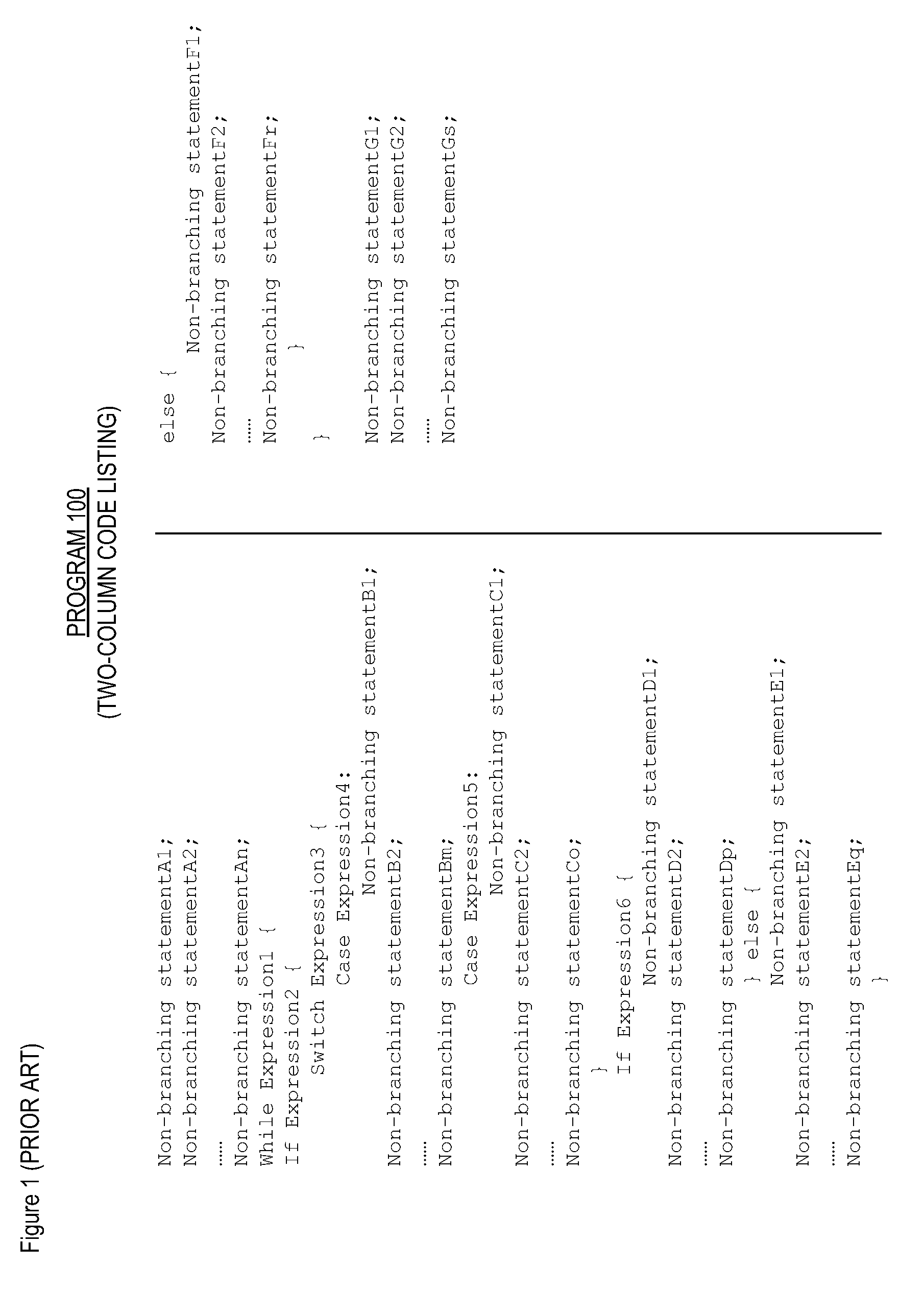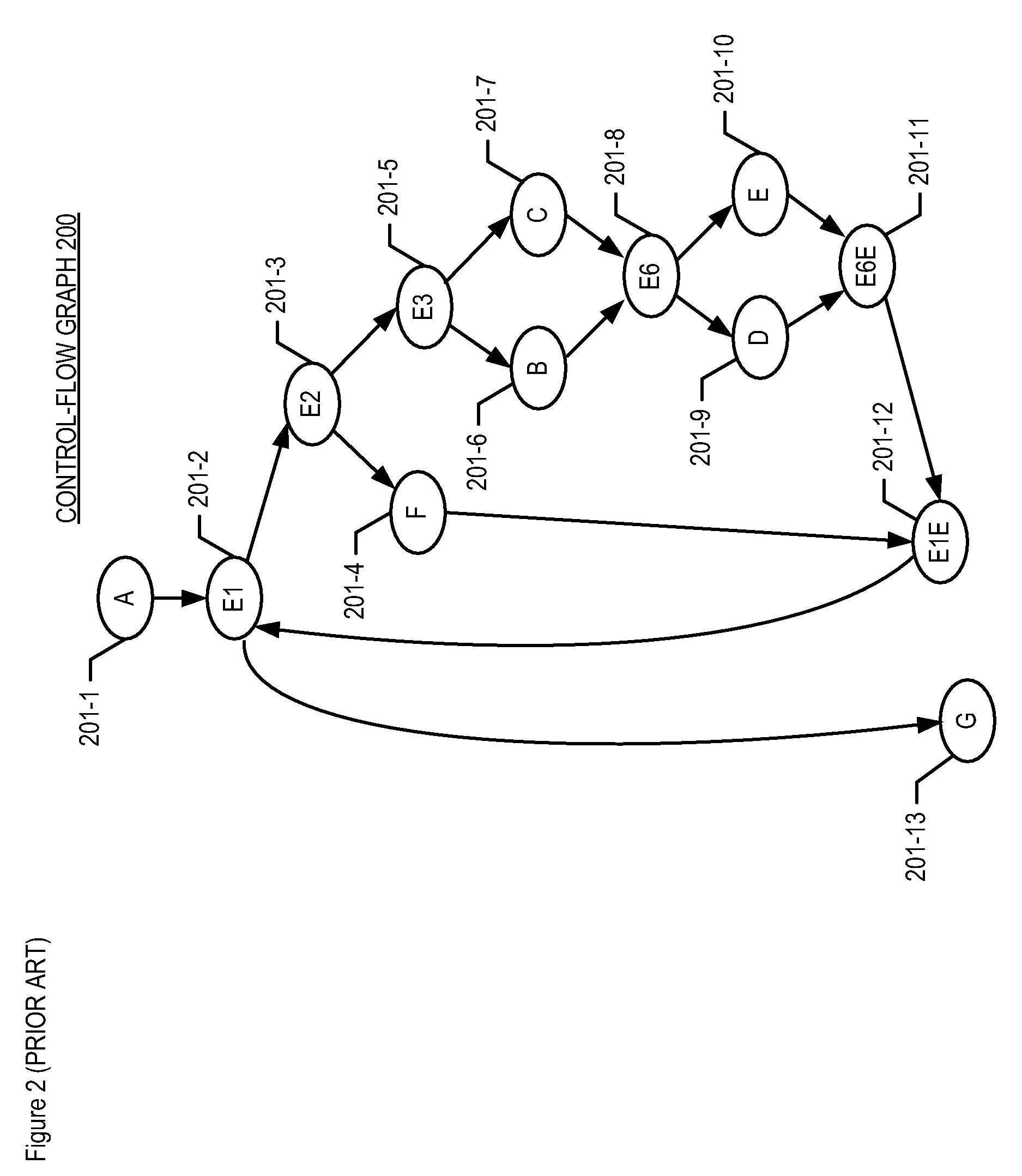Efficient Program Instrumentation
a program instrument and program technology, applied in the field of software runtime analysis, can solve the problems of consuming a great deal of memory, slowing down the execution of the program, and affecting the performance of the program, so as to reduce the overhead of instrumentation and slow down the program execution
- Summary
- Abstract
- Description
- Claims
- Application Information
AI Technical Summary
Benefits of technology
Problems solved by technology
Method used
Image
Examples
Embodiment Construction
[0039]FIG. 8 depicts the high-level architecture of a first illustrative embodiment of the present invention. As shown in FIG. 8, the first illustrative embodiment comprises off-line analyzer 810, run-time instrumenter 820, and testing / monitoring tool 830, interconnected as shown.
[0040]Off-line analyzer 810 comprises software, or hardware, or a combination of software and hardware capable of determining one or more locations in a program at which an instrumentation probe is to be inserted. The determination of instrumentation locations by off-line analyzer 810—referred to as the Simplified Super Nested Block Method—is described in detail below. The method is first described informally as applied to illustrative control-flow graph 200, and subsequently a formal specification of the method is provided.
[0041]Informal Description of the Simplified Super Nested Block Method
[0042]An informal description of the Simplified Super Nested Block Method as applied to illustrative control-flow gr...
PUM
 Login to View More
Login to View More Abstract
Description
Claims
Application Information
 Login to View More
Login to View More - R&D
- Intellectual Property
- Life Sciences
- Materials
- Tech Scout
- Unparalleled Data Quality
- Higher Quality Content
- 60% Fewer Hallucinations
Browse by: Latest US Patents, China's latest patents, Technical Efficacy Thesaurus, Application Domain, Technology Topic, Popular Technical Reports.
© 2025 PatSnap. All rights reserved.Legal|Privacy policy|Modern Slavery Act Transparency Statement|Sitemap|About US| Contact US: help@patsnap.com



